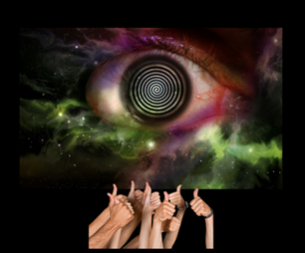Hypnosis and Hypnotherapy in the Treatment of Chronic Migraines
Hypnosis and Hypnotherapy in the Treatment of Chronic Migraines
 Treating and preventing chronic migraine headaches with hypnosis is a cost-effective alternative to prescription drugs. Actually, hypnosis is of benefit in the treatment of headache whether the headache is migraine, episodic, or chronic.
Treating and preventing chronic migraine headaches with hypnosis is a cost-effective alternative to prescription drugs. Actually, hypnosis is of benefit in the treatment of headache whether the headache is migraine, episodic, or chronic.
In one recent study, researchers compared the costs of several types of behavioral treatment with preventive prescription drugs. After six months, behavioral treatment was comparable with prescription drug treatment. In minimal-contact treatment, a patient sees a therapist a few times a year and for the most part practices the behavioral techniques at home, often with the aid of recorded audio programs.
After one year, minimal-contact therapy was nearly $500 cheaper than drug treatment, according to the study published in the June 2011 issue of the journal Headache.
| For a limited time, get 75% off an online course by one of our graduates: 21 Days to Love Your Body. Meditations for a Healthy Weight. Check out the course by clicking here. |
Using Hypnotherapy to Treat Underlying Stress
Even more effective than self-hypnosis, however, is using hypnotherapy to treat the underlying stress causing the headaches. Pain in the body is a “wake up call”, delivered in the language that the body speaks: sensation. In hypnotherapy, because we have direct access to the subconscious, we can ask the body to deliver its message in the language that the conscious mind understands, that is in English. We might ask the client, “Now bring your attention to the sensations that are most foreground for you right now. Where is that? Okay, the temple areas of your head. Now give the feelings in that area of your body a voice. Let it speak.” This Gestalt therapy technique is very effective, and inside the trance logic of the hypnotic state, the client will almost always spontaneously experience words coming out of their mouth to express the point of view of the pain located within the body. “I am sick and tired of working so hard and getting nowhere” or “I need a break, and this is the only way I know to force you to give it to me.”
This is just the beginning of the emotional exploration, however. Next we use these words and the light they shed on the underlying dynamics at work to go back to the source of this behavior pattern, back in age regression. Perhaps the client follows the trail back to an incident at age seven when he was exploding with frustration in his second grade classroom, unable to understand the teacher’s explanation of how to tell time. His head began to throb, and the teacher allowed him to go to the nurse’s office to lie down and rest. The headache became his ticket out of a hopelessly difficult situation, and he unconsciously began using it more and more often. We then work with the client’s age-regressed seven-year-old ego state to find alternative ways of dealing with the challenging situation. And with the help of the adult ego state, that seven year old will always come up with creative solutions. “Maybe I’ll just tell the teacher that I need more time. Or maybe I will replace the analog clock on the wall with a digital one.” The client experiences a healthy corrective experience, gaining a sense of empowerment, and also a sense that the headache has been one option but is not the only option in any given stressful setting. And perhaps it is an option that his adult no longer chooses.
Seeking Alternative Modes of Relief
This new insight, and the freedom experienced retroactively, bring the client relief from the dread that these familiar headaches are inevitable, that they are a mortal enemy lurking in his head waiting to pounce anytime. Reaching such a realization on the visceral level, not just intellectually, is possible only through accessing the creativity of the subconscious mind. And hypnosis is a gentle yet powerful means of gaining access to deep subconscious motivation, and access to the body’s wisdom in a clearly understandable language.
It is very common for patients to go to doctors or to the local drug store or to the medicine cabinet for relief. They do not often think of going to their therapist to work with physical issues such as headaches.
However, hypnotherapy clients know quite well that every physical symptom they experience has the potential to be healed with hypnotherapy. This is a way that many certified hypnotherapists greatly increase their income while serving their clients more effectively.
The subconscious mind has the amazing ability to speak for and through the human body. When clients are taught the skill of direct communication with the body, they are empowered in ways they never before imagined. In modern medicine, we have been trained to exclusively go to medical doctors to solve physical problems. However, Chinese medicine, Indian Ayurvedic medicine, and other ancient herbal medicines have always connected the mind, body and spirit: all parts of ourselves are connected. Modern Western medicine that specializes and separates different parts of the body is actually sometimes counterproductive to healing.
In places like the Cleveland Clinic’s Integrative Medicine department, they are discovering how to use hypnotherapy, along with other tools, to bring healing to the entire mind, body and spirit of their patients.
When clients realize that their pain, illness and even serious disease may have originated from a childhood decision based on attaining safety or comfort or getting their needs met in some way, they are elated that they can now make healthy adult decisions that don’t include the pain or illness! It is often quite a surprise and a joyful healing event when this takes place right in the therapist’s office.
So when you learn hypnotherapy you will have a whole new resource of referrals wanting to avail themselves of this modality of treatment.









